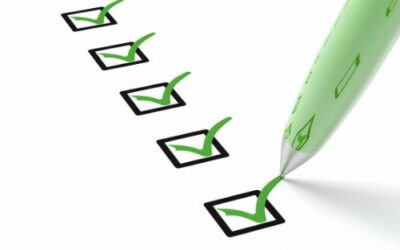
It’s very likely that if you run a business you will have an asset register. You may rely on this register to show you just how many assets they have, which department uses them, and what they are worth. Your asset register may also contain the details of your IT assets. It’s likely that you may also store the same information about these assets as you do your other assets. However, this can be a mistake.
Your IT assets tend to be some of the most valuable assets that your business has. They may also be the most relied upon. This is why it makes sense for you to have an IT asset register. A register such as this can store many different types of information that can prove to be highly useful.
Let’s now take a look at the difference between both types of asset registers so you know why having an IT register can be beneficial.
What is An IT Asset Register?
A register such as this can contain a variety of information about your IT assets. These assets include:
- Computers
- Printers
- Modems
- Laptops
- Tablets
- All hardware
- All software
All of these assets can be tagged with a QR code or a barcode for tracking. When all of your assets are tracked you can potentially boost security. This is ultimately because you can see where your assets are all day, every day.

What Is An Asset Register?
An asset register can be a relatively simple document. Some businesses use spreadsheets to help them keep a track of every asset. Others use a list to which they add and remove assets as and when they please.
Asset registers may not contain much information about the assets in question and this is not a good thing. For example, you may not know the maintenance status of your assets or when they were last repaired. You may not know the value of your assets or which team member is currently using them. It’s asset registers such as this that do not help a business to grow.
Surely They’re The Same Thing?
An IT asset register and a regular asset register may not be the same thing. Asset register software allows you to keep an eye on your IT assets while enabling you to add a whole host of information. For example, you could add the following information about your IT assets:
- Software updates
- User manuals
- Sensitive information which can be protected by limiting who sees it
- Software licences and the date of expiry
- Warranty information
- And so much more
When you rely on a spreadsheet you run the risk of them containing human errors. This can be the same for asset lists in a typed document. We humans get tired and we can make mistakes. As a result, your register may not be accurate. This ultimately means that your business may not be as valuable or it may even be much more valuable than you think.
The good news is that digital IT asset registers that are just as easy to use do not contain any human errors. In fact, the data created will be created automatically.
Did you know that you don’t just have to track your IT assets? You can track the rest of your assets as well. This ensures that you have more control over all of your assets no matter what they are.
Tracking Your IT Assets
One of the best things about using an IT asset register is that it allows you to control your assets in many different ways. We have already seen that you can see who is using your assets. You can also see when your assets were checked out and back in again if necessary. If this was not enough, you can track the maintenance status so you know exactly when your computers were last repaired. In addition to this, you can even set maintenance reminders at your preferred intervals.
An IT asset register can be hugely beneficial if your IT assets are used in the field or in different locations. You can track each of your assets with relative ease and you can add as much information about each asset as you wish. Your IT register can even be separated from your regular asset register, should you wish it to be. The choice is yours
Want to know more about how an IT asset register can help your business or have questions about asset registers in general? talk to us. We’re a team of specialists who can answer your queries and questions. You can reach us now at: team@itemit.com. We can help you to learn how to use an asset register and how you can get the most from it. Talk to us today.

Try itemit
Choose a better way to track
your assets.
Start your free 14-day trial now!

Keep Learning
itemit Blog
Tips, guides, industry best practices, and news.
Why Having An Accurate Asset Register Is Important
Why is having an accurate asset register so important and how can it help with equipment tracking? Read this post now to find out!
What To Include In Your Fixed Asset Register
What should you include in your fixed asset register and how can you make it work for you? Read this post now to find out!
What Exactly Is An Asset register?
What exactly is an asset register and will your chosen asset register format offer you everything you need? Read this post to find out!



